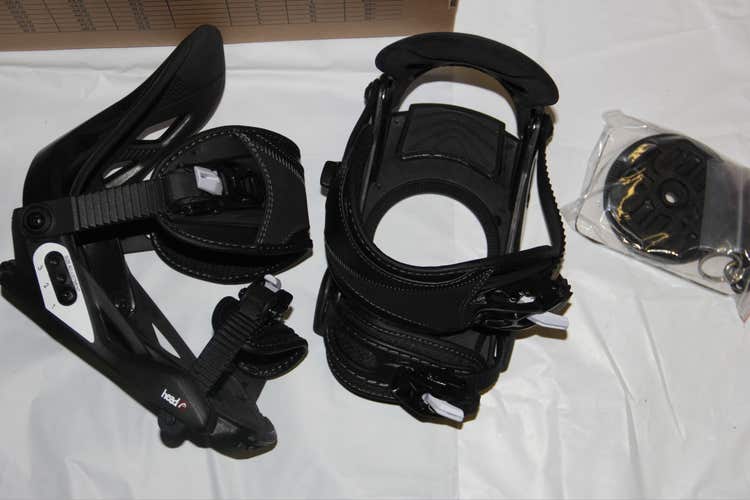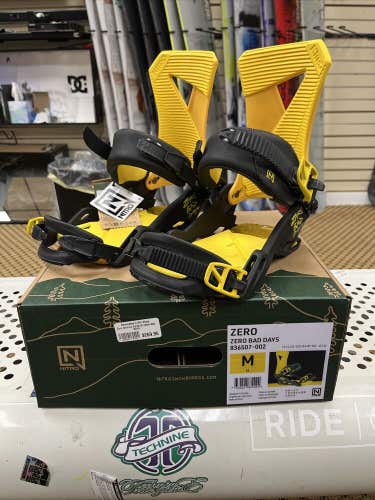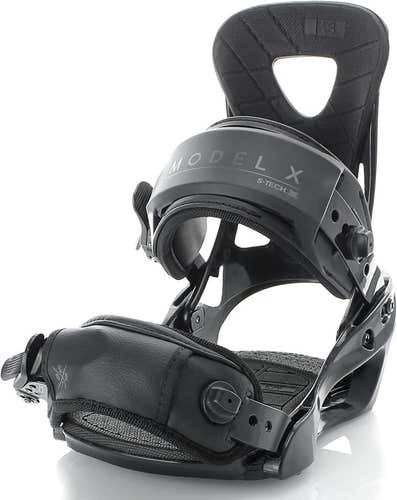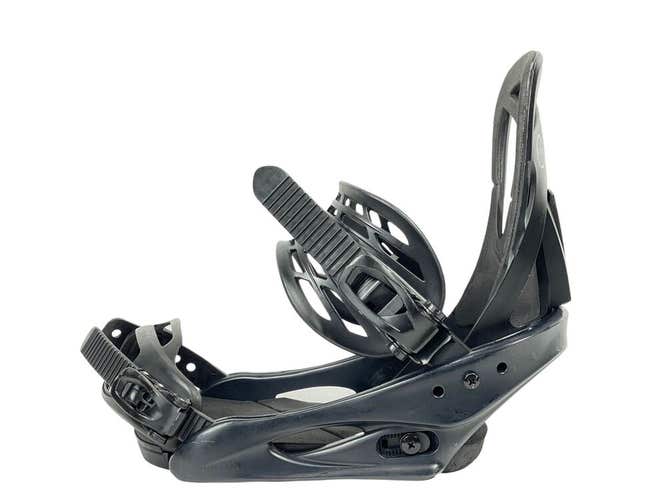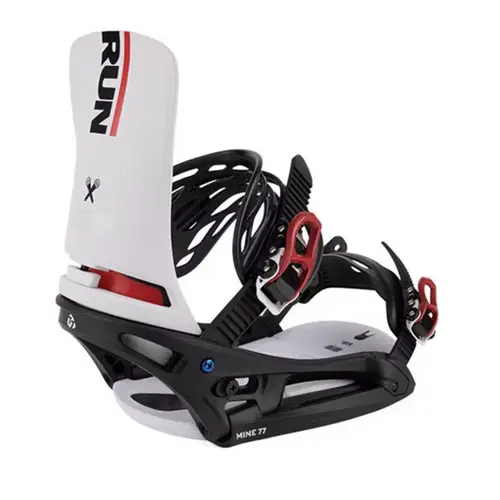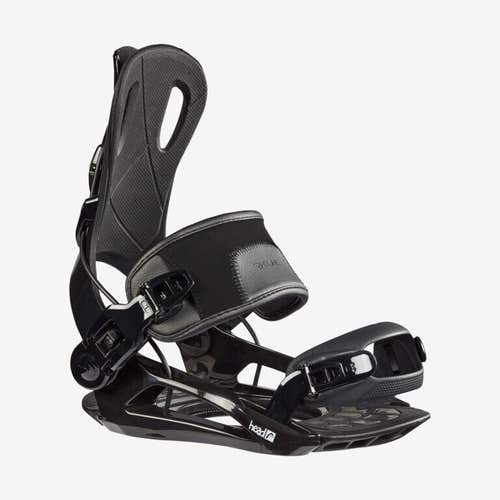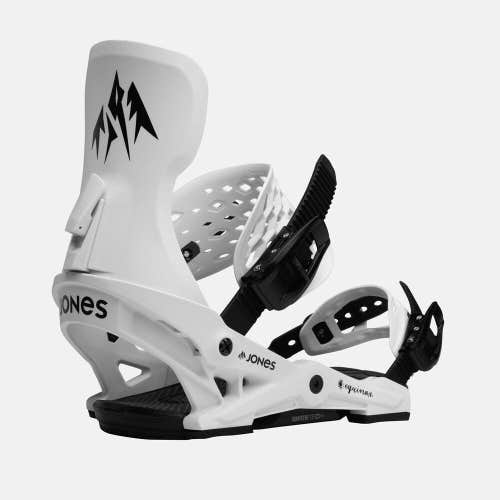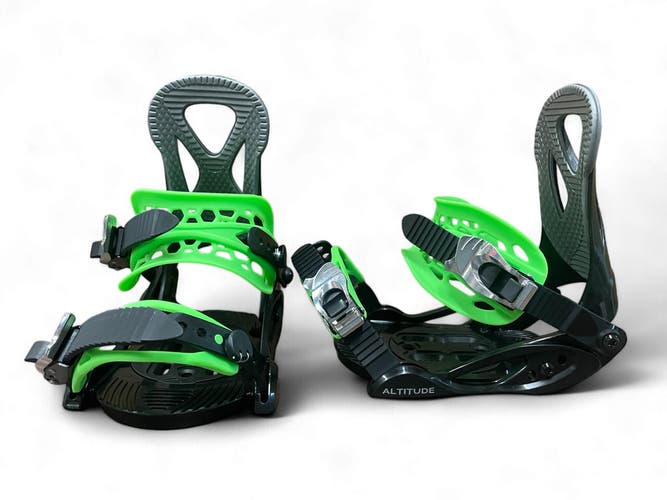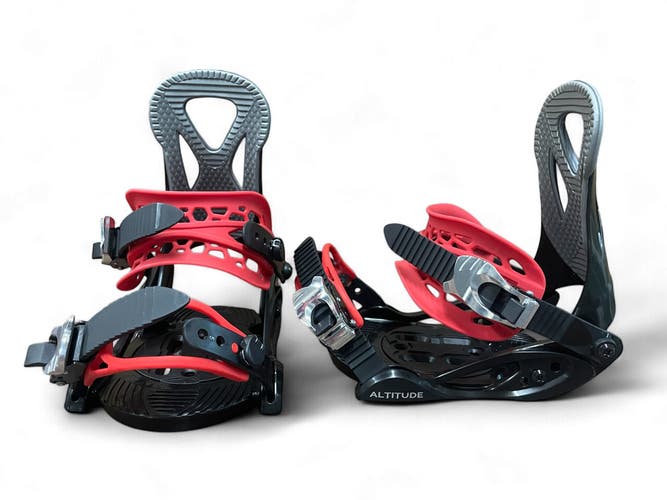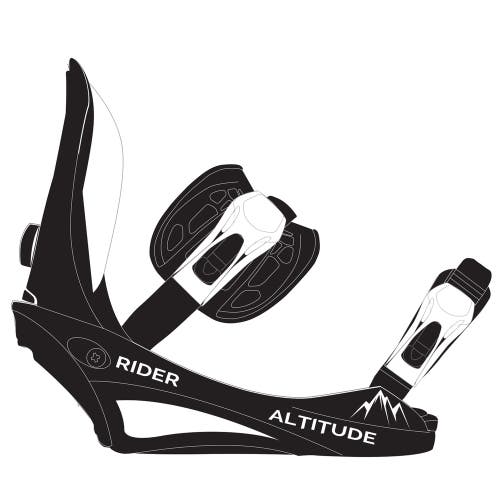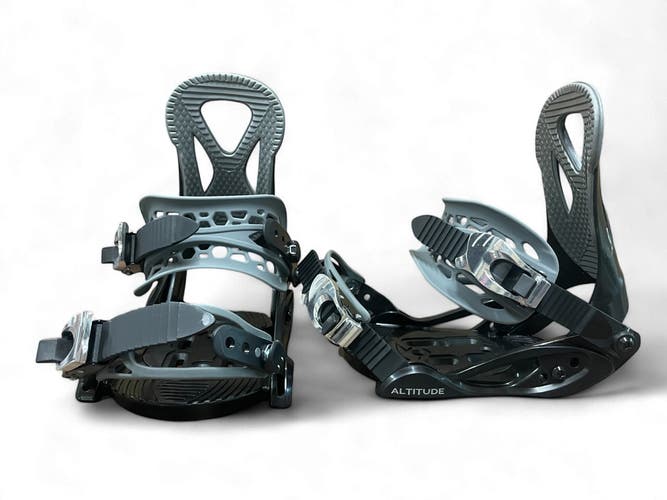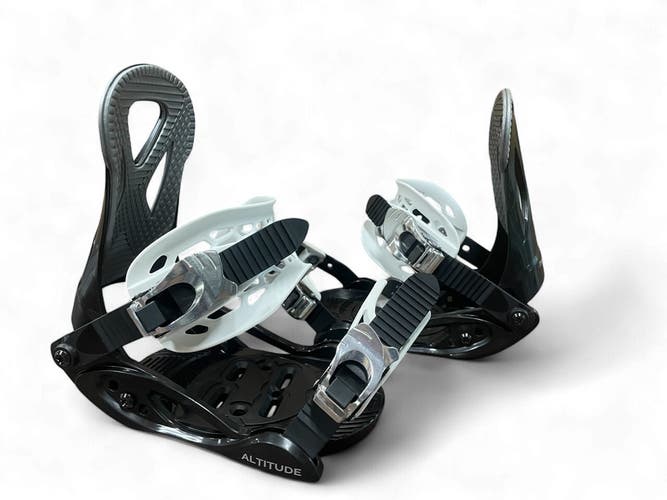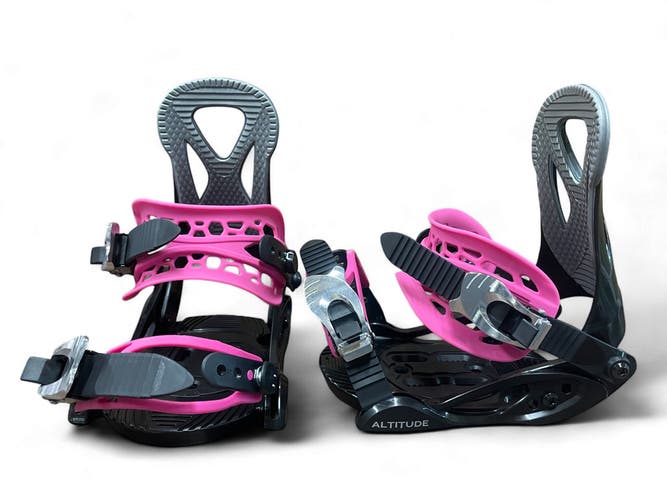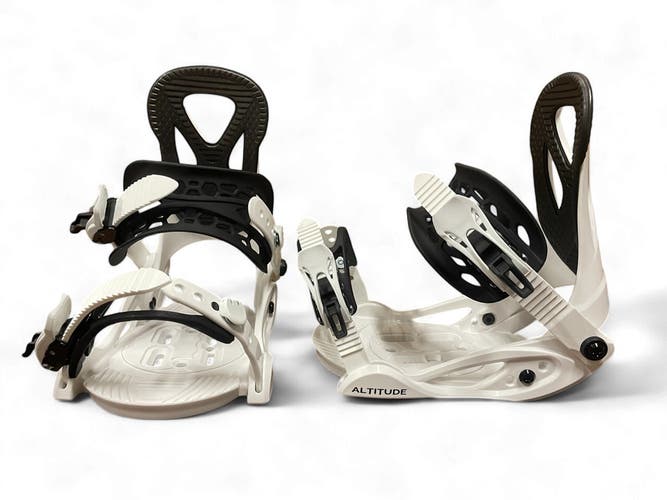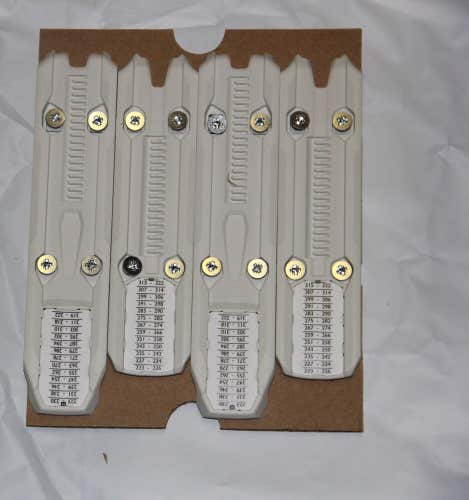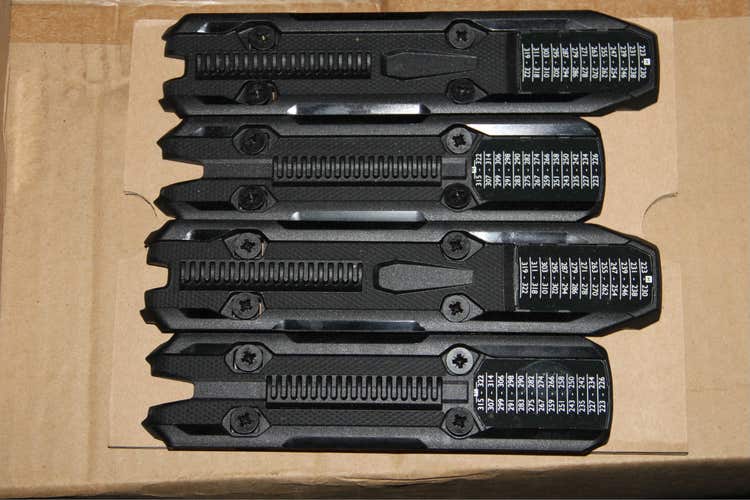Here’s a breakdown of the different types of snowboarding bindings and how to choose the right one for you:
Strap-in bindings (Traditional Bindings) are best for all-mountain, freestyle, and freeride riders.
Strap-in bindings are the most common type. They feature ankle and toe straps that securely fasten your boots into the bindings. These versatile bindings provide solid support and responsiveness for all riding styles.
Features:
- Adjustable straps for a customized fit.
- Solid ankle and toe support, allowing for precise control.
- Different flex ratings (soft, medium, or stiff) to suit your riding preferences.
Advantages: Reliable and secure, offer good response and support and can be easily adjusted to fit different boot sizes.
Disadvantages: It takes a bit longer to get in and out of compared to other systems and requires more effort when getting into the binding.
Rear-entry bindings are best for riders looking for convenience and quick entry/exit.
Rear-entry bindings have a high back that opens like a door, allowing you to step into the binding from the rear. You only need to adjust the strap once, and then you can step in and out of the bindings.
Features:
- Fast entry and exit.
- Pre-adjusted straps, so there is no need to fine-tune them each time.
- Often feature a more flexible highback to provide comfort.
Advantages: Quick and easy to get in and out of, great for riders who want to save time or find traditional strap-in bindings a hassle, and ideal for beginner or casual riders who don’t want to waste time on setup.
Disadvantages: Some rear-entry bindings may not offer as much support or adjustability as traditional strap-in bindings. Not as responsive as strap-in bindings for aggressive riders or high-performance needs.
Step-on bindings are best for riders looking for convenience with no straps.
Step-on bindings offer a boot that clicks into place without needing straps. The binding securely holds the boot with clips or a locking mechanism.
Features:
- No need for straps — you step into the binding.
- Quick and easy entry and exit.
- Often compatible with specific boots designed for step-in systems.
Advantages: Fastest entry and exit of all binding systems, no hassle with straps or adjustments, and very convenient for riders who prioritize ease of use.
Disadvantages: Limited compatibility — you need specific boots compatible with step-on bindings, which do not offer as much flex or customization as traditional bindings. They are not always as responsive or supportive as strap-in bindings for aggressive riders.
